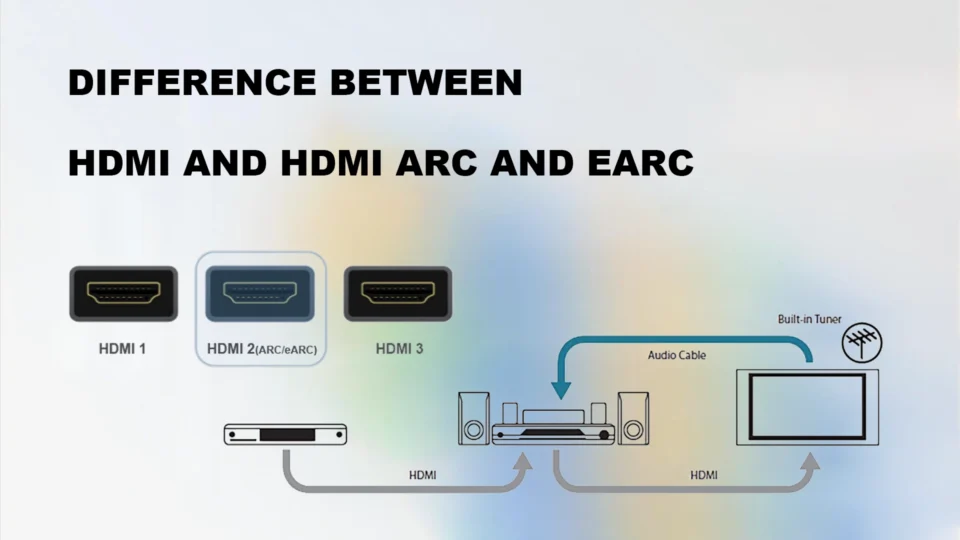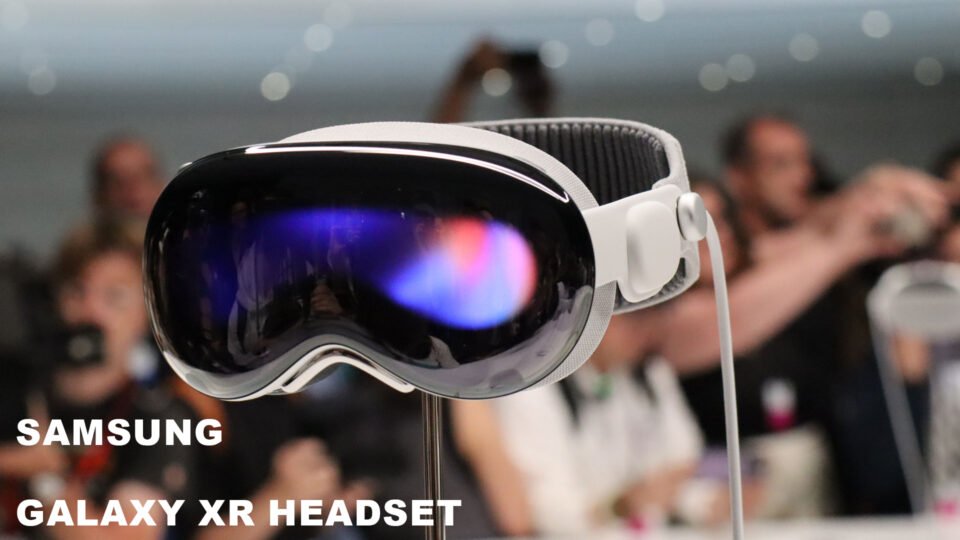About China GPMI
China GPMI (General Purpose Media Interface) is a new, all-in-one connectivity standard emerging from the Shenzhen 8K UHD Video Industry Collaboration Alliance (SUCA). Backed by a consortium of more than 50 Chinese tech firms including Huawei,ZTE,HiSilicon,CESI,Skyworth,Konka,TCL CSOT and more, GPMI was unveiled in April 2025 in Shenzhen. Its goal is to streamline AV setups by delivering ultra-high-definition video, high-fidelity audio, data, control signals, and power through a single cable.

GPMI
GPMI, or Global Performance Media Interface, is an emerging high-speed transmission standard. Unlike USB-C, which is tightly tied to consumer devices, GPMI is designed with scalability and cross-industry performance in mind.
Features of GPMI
Unlike existing standards that often specialize in video (like HDMI/DisplayPort) or data (like USB), GPMI aims to be a true “one-cable” solution, integrating:
- High-Bandwidth Video and Audio: Supporting ultra-high resolutions and refresh rates.
- Data Transmission: For various peripherals and devices.
- Network Connectivity: Built-in Ethernet capabilities.
- High-Power Delivery: Significantly reducing the need for separate power adapters.
Think of it as the ultimate convergence of connectivity into a single, highly versatile port.
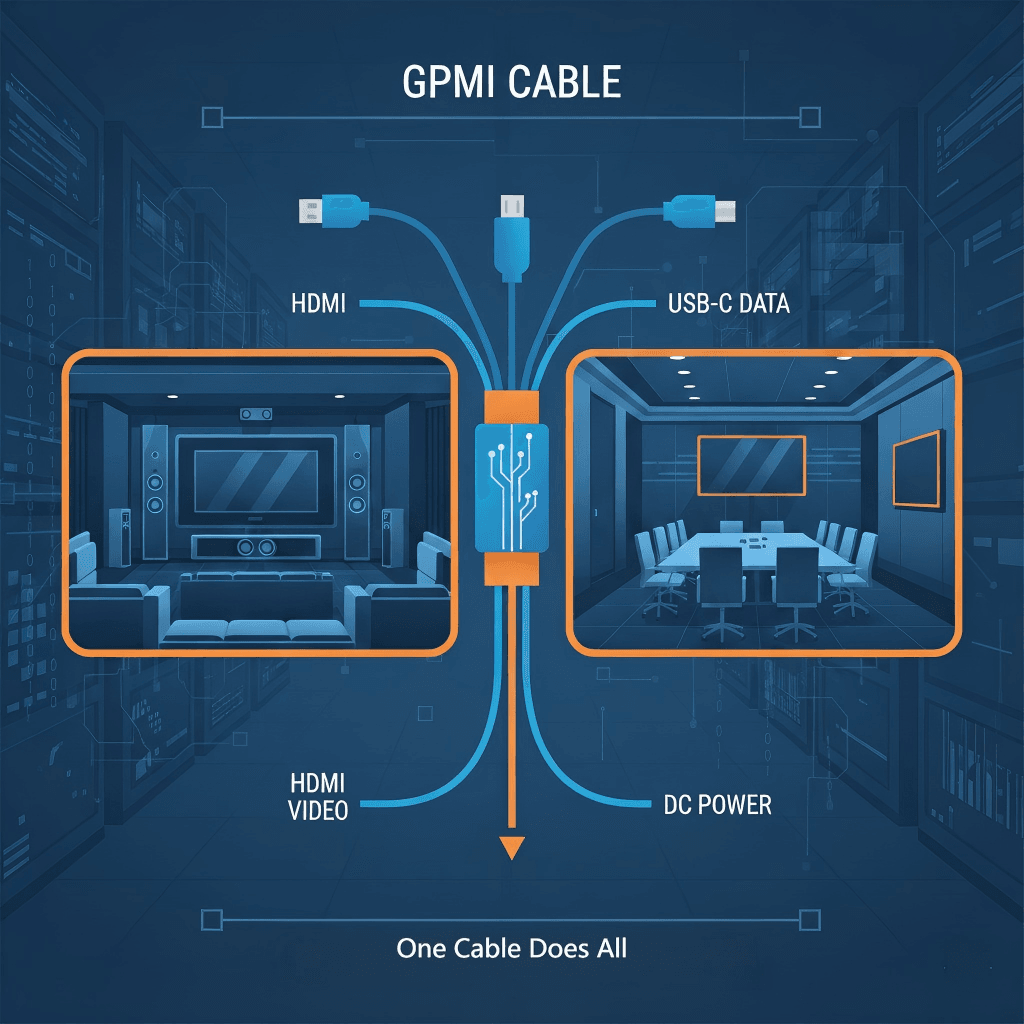
About USB-C
What is USB-C ? USB-C is a physical connector standard that supports the latest versions of USB (such as USB 3.2 for 10Gbps, USB4 for 40Gbps, and Thunderbolt 4 for 40Gbps).
Reversible design: Easy plug-in without worrying about orientation.
Widespread adoption: Found in laptops, smartphones, chargers, monitors, and external storage.
Performance range: Depending on the protocol, supports up to 40Gbps (Thunderbolt 4/USB4).
Power delivery (PD): Can deliver up to 240W, making it capable of charging high-performance laptops and devices.
USB-C is currently the most universal connector of choice for consumer electronics, with strong backing from the European Union’s regulations mandating USB-C charging ports for mobile devices.

GPMI vs. USB-C: What’s the Difference and Which One Matters for the Future?
When it comes to high-speed data transfer and versatile connectivity, two terms are making waves in the technology world: GPMI (Global Performance Media Interface) and USB-C. While USB-C has already become a household name in laptops, smartphones, and peripherals, GPMI is a newer, performance-driven interface standard with ambitions that go beyond consumer electronics.
Follow us, we’ll explore the key differences between GPMI and USB-C, their applications, strengths, and what they mean for the future of connectivity.
GPMI vs. USB-C: Side-by-Side Comparison
| Features | GPMI | USB-C |
|---|---|---|
| Type | Protocol/architecture for high-performance connectivity | Connector + protocol for consumer devices |
| Max Bandwidth | It depends. GPMI Type-B: 192Gbps GPMI Type-C: 96Gbps | Up to 40Gbps as of October, 2025 (USB4/Thunderbolt 4) |
| La entrega de energía | It depends. GPMI Type-B: 480Watts GPMI Type-C: 240Watts | Up to 240W (USB-PD 3.1) |
| Ecosystem Maturity | Emerging, limited adoption | Very mature, global adoption |
| Primary Applications | TV, laptops, smartphones, chargers, monitors, peripherals, external storage, and more | TV, laptops, smartphones, chargers, monitors, peripherals, external storage, and more |
| Connector Form | GPMI Type-B & Type-C | Fixed reversible USB-C plug |
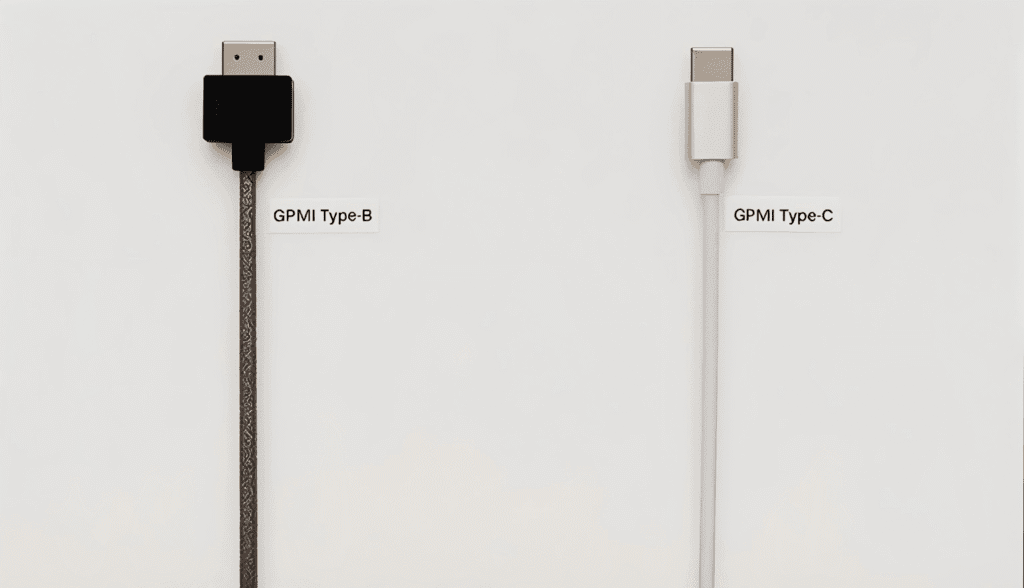
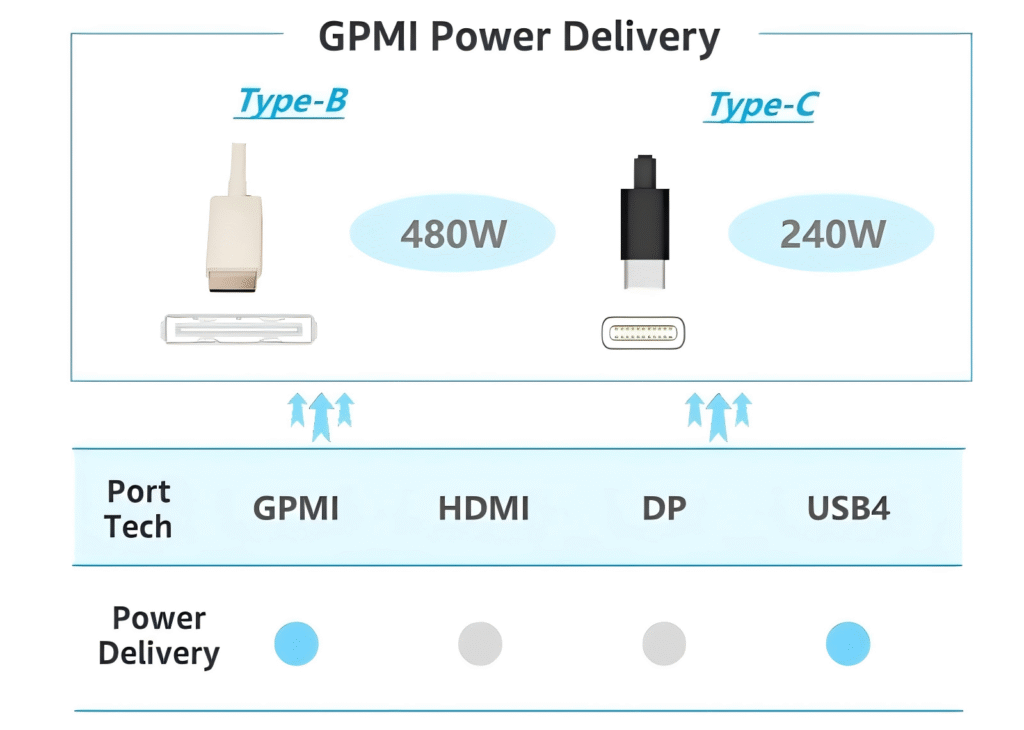
Key Similarities
-High-speed transmission: Both aim to deliver ultra-fast connectivity for modern workloads.
-Versatility: Support multiple functions (data, power, media).
-Future-proofing: Both are designed with scalability and evolving applications in mind.
Key Differences
-Scope: USB-C is consumer-focused; GPMI aims bigger, may include enterprise- and performance-focused.
-Connector standardization: USB-C is unified and universal; GPMI is modular and adaptable.
-Adoption: USB-C is already universal, while GPMI is still in the adoption and ecosystem-building stage.

Which One Matters for the Future?
-Short term (2025-2030): USB-C will dominate consumer electronics thanks to regulations and wide adoption.
-Long term: GPMI could play a crucial role in highLy integrated applications powering next-generation AI computing, immersive media, and high-bandwidth industrial applications.
Think of it this way: USB-C is the connector you already use every day, while GPMI is the backbone of tomorrow’s high-performance digital infrastructure.

Final Thoughts
Both GPMI and USB-C represent important milestones in the evolution of connectivity. If you’re a consumer, USB-C is here to stay. If you’re in the B2B, industrial, or AV sector, keep an eye on GPMI—it could reshape the future of data transfer and system integration in the future. But how fast will it comes ? It still get a long way to go. Let’s watch and see.
Sobre nosotros
En AOCFiberlink, we specialize in high-performance AV and data transmission products including fiber optic HDMI, DisplayPort, USB4, and USB-C active cables for global OEM/ODM markets. With a deep understanding of emerging interface trends like GPMI, we help our clients stay ahead of the curve.
📬 Contact us today to learn more or request a custom solution.
📧 Email: sales@aocfiberlink.com
📱 WhatsApp: +86-18980938955
🌐 Website: www.aocfiberlink.com



